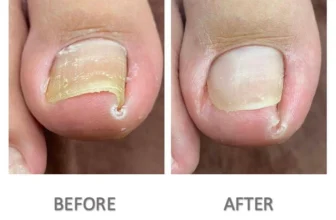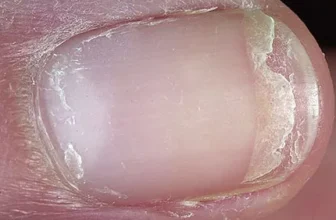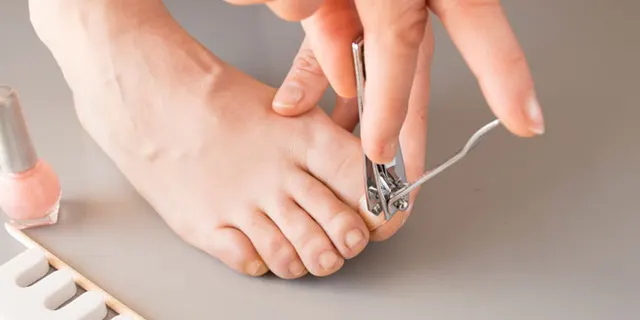
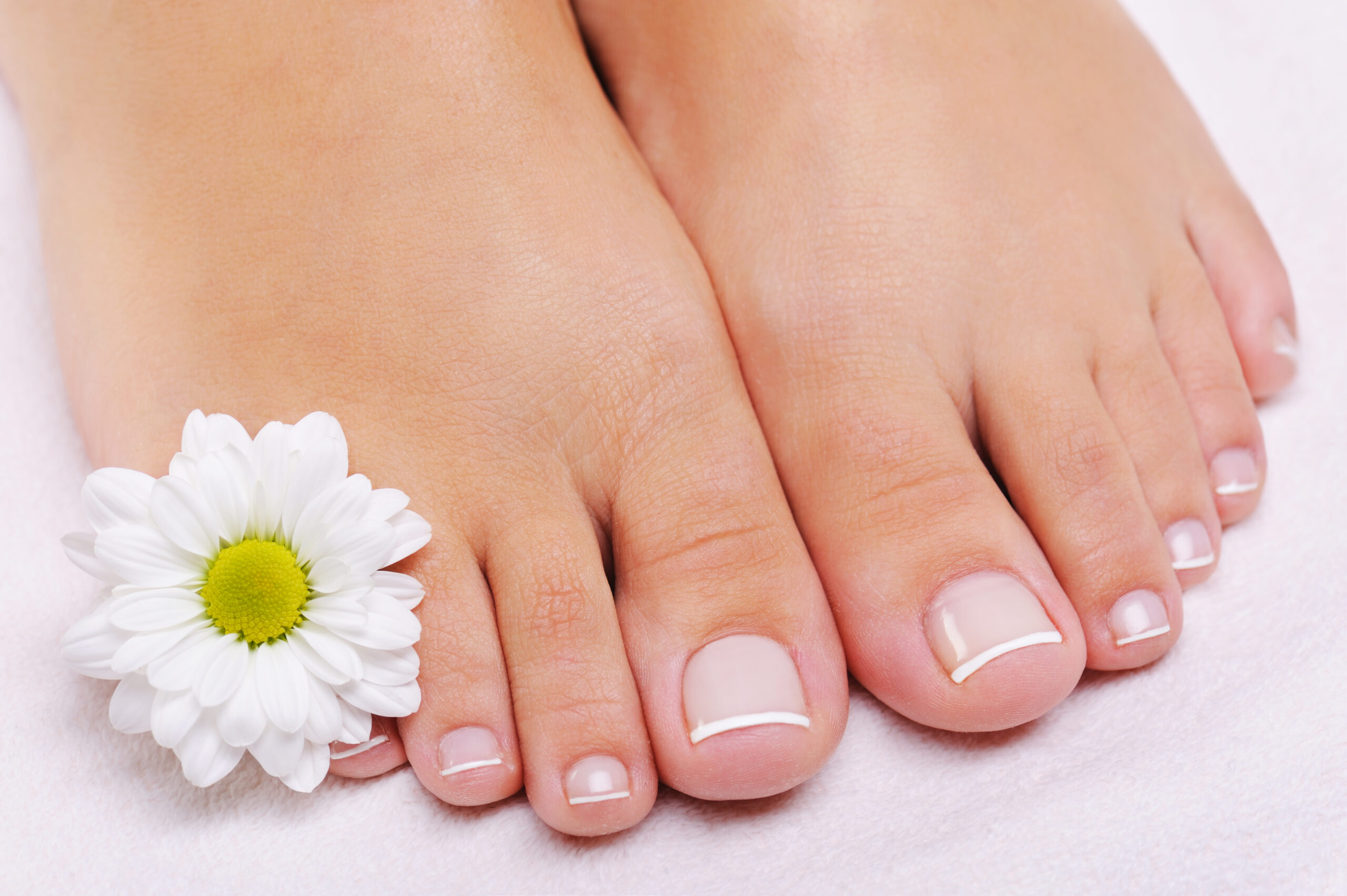
You probably do not pay much attention to how you cut your toenails. Most of the time they are covered by shoes anyways. Letting your toenails grow too long could cause ingrown nails and other problems with your feet. How long should your toenails be?
To answer this and any other type of nail care and foot care information, check our collection of informative articles, read more about foot care.
Trimming your toenails to the proper toenail length will not only keep your nails looking healthy and keep them from becoming ingrown. Your toenails should be kept between 1 mm and 2 mm in length. The level of your level of activity and personal preference could affect your toenail length.
Below we will take a closer look at how to cut your nails and the proper toenail length.
Signs your Toenails are Too Long
There isn’t a set toenail length chart for your toenails so it may be difficult to know when they need to be cut. Some signs your toenails are too long include an uncomfortable or painful feeling in your feet, and your nails cutting into your socks or shoes. If your nails are filled with toe jam, begin to curl, or become ingrown are signs your toenails are too long.
Cutting your Nails Too Short
When cutting your toenails you should leave at least some of the white nail growth at the end of your toenail. Cutting beyond the white part of your nails risks damaging your nail bed and causing injury and bleeding. You will also have a risk of your nails digging into your nail beds and becoming ingrown if they are not cut at the proper toe length.
What is the Proper Toenail Length?
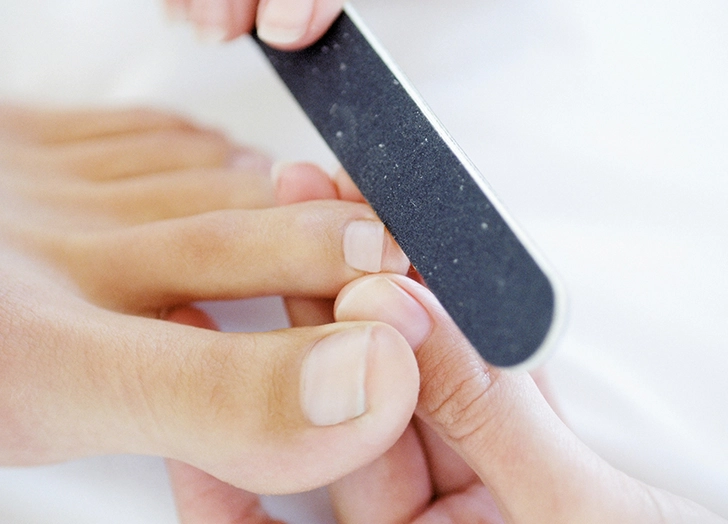
Keeping your toenails between 1 mm and 2 mm is the best natural length of toenails. Most nails will grow on average 1 mm to 2 mm each month. Cutting your toenails every 6 weeks will help keep the perfect toenail length. Read this article about how to soften your toenails to make it easy to cut your toenails when it’s time to do so.
This length could vary according to each individual. If your toenails are cutting into your socks or shoes you may need to try different toenail lengths. If your toenails extend past the tip of your toe you should consider trimming and keeping your toenails shorter.
Round or Square Nails?
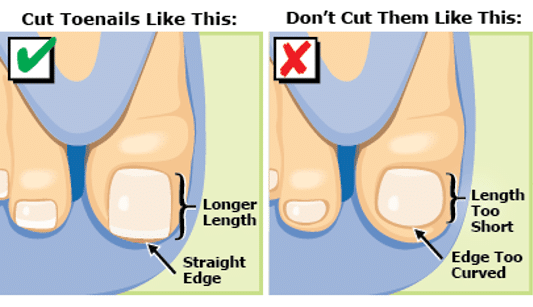
There is some debate when you cut your nails if the cut should be straight or rounded. Most would think that a rounded toenail would look natural, but you should trim your nails straight across. The edges of your nails should be trimmed without leaving a curve in them. If they are left curved you have the risk of the nails cutting into your skin and becoming ingrown.
Ingrown nails can become a serious issue and cause other problems with your feet that require medical attention. Keeping your toenails at the proper length and square at the end will help prevent ingrown toenails and other issues with your feet.
Tips for Trimming Your Toenails

It does not require any additional or special equipment to achieve a straight cut on your toenails. Taking your time and cutting straight across will enable you to achieve a straight cut on your toenails.
Take care to only remove a small portion of your nails at a time. It will be easier to cut the proper amount and avoid cutting your toenails too short if you only take a small portion of your toenails off at a time.
If your toenails are too square and become snagged on your socks or shoes, you can remove a small portion and slightly round them over. A slight roundness will give your nails a natural look as long as they are kept long enough to keep from growing into your nail bed.
Do not use the same trimmers for your toenails and your fingernails. Using the same trimmer on your fingernails and toenails could cause the transfer of bacteria between your toenails and fingernails. We have an article to find out which are the Best Toenail Clippers, there’s also a review article if you want to know more about some brands like Heavy Duty Toenail Clippers or Harperton Nail Clipper Set.
Keeping the clippers separate and cleaning them with alcohol after use will prevent you from transferring any bacteria or fungus when trimming your nails.
What if You Don’t Cut Your Toenails?
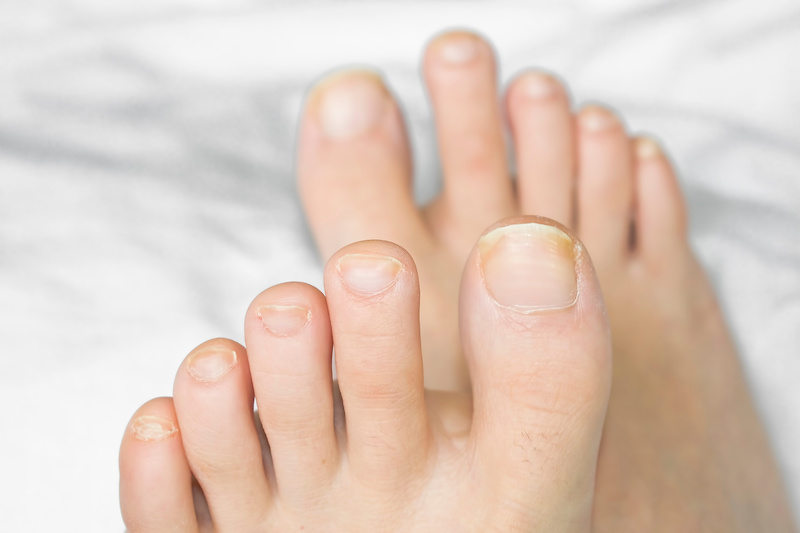
If you do not cut your toenails on a regular basis you can experience serious problems with your nails and feet. Pain and discomfort will be the first signs that your nails need to be trimmed. If they are ignored it can lead to infections, odor, and difficulty cleaning under your nails. Eventually, it can lead to a loss of your toenail or even your toe or foot.
If your toenails are too long it can be difficult or uncomfortable to wear different types of shoes. High heels, pointy-toe shoes, and steel-toe boots can become difficult to wear if your toenails are not kept at a comfortable length of toenails.
Overgrown nails could also add to foot odor because of the dirt and build-up that can collect under the toenails. It could also lead to fungal infections if they are not cleaned properly. This may cause your toenail to become yellow and brittle.
If they continue to be neglected this problem could worsen into a bacterial infection or worse. You will need to seek medical attention and may need antibiotics if this is the case. Bacterial infections could lead to the loss of toes or even the loss of your foot if untreated.
Soaking your Nails
If you have thick or brittle nails, soaking them for at least fifteen minutes in Epsom salt can help soften your toenails and make them easier to trim. Your nails should be dried thoroughly before you attempt to cut them. Wet nails can become slippery and difficult to cut.
If you do not have Epsom salt, you could cut your fingernails after you have a shower or bath. This should be able to soften your nails and make them easier to cut.
Conclusion
Keeping your toenails at 1 mm to 2 mm will prevent your nails from digging into your socks or shoes. It will also help you keep your nails clean. Longer toenails can promote bacterial growth and contribute to foul odors from your feet due to the dirt and debris under them.



